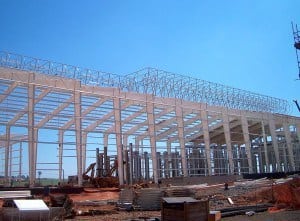What Are The Effect Of Building Construction On Environment?
Inefficient ventilation is just one of the ways energy is wasted and the environment is hurt by a building. Building construction waste is another. Construction waste comes from unused and excess material generated during site excavation, site clearance, construction, and renovation. This waste may be rubble (concrete, bricks, and asphalt), byproducts (wood and wood products, plaster, insulation) and scrap (metal and plastic). These materials are commonly referred to as C&D debris and comprise approximately 15 to 30% of all waste disposed of in landfills. Further, some of these waste products may contain toxic constituents that pose a risk to human health and the environment. This is why you need to make sure that you are using the best construction company for you, such as the people at Hoover Buildings. Additionally, whoever owns the land or site must be responsible in ensuring no waste is left behind. As much as construction companies are responsible for their own wastage, other components not left by a construction company can be left in the soil. In this case, it is the site’s owners responsibility to get a phase 1 environmental site assessment in Arizona, or wherever they’re located, to ensure the construction site is safe. The following questions should be addressed to ensure that C&D debris has a minimal effect of building construction on environment.
 Ecosystem Concerns
Ecosystem Concerns
The clearing of lands for construction can lead to the loss of wildlife habitats, erosion and sedimentation, loss of native plant life, and contamination of soils and surface and groundwater. However, proper design and planning can help reduce the effect of building construction on environment.
- Is the construction necessary or is it possible to scale back the design?
- Does the construction contract specify that contractors should cause the least possible disturbance to the site’s vegetation?
- Does the construction plan provide for erosion and sediment control during construction as well as after?
- Is there a plan to reuse soil from the construction site?
- Does the plan include the re-vegetation of areas disturbed by construction?
- Is there a plan to reduce the use of materials containing constituents that can negatively affect the environment’?
- Is there a spill control plan to properly address spills of hazardous construction materials?
- Are hazardous materials in proper storage at the construction site?
- Is there a plan to use or sell trees cut down during construction activities as lumber or compost?
Procurement Concerns
Environmentally sound purchasing decisions are an important element of pollution prevention, helping reduce the amount of waste generated by a building/housing construction project. Whether it be by choosing materials that can be reused in other ventures (look here for one such example) or by actively attempting to reduce new materials used. In addition, the purchasing of recycled-content material helps support markets for materials collected for recycling.
- Will the project use durable, long lasting materials, thereby reducing the amount of construction waste generated over time?
- Are there provisions for the proper storage of construction materials to reduce the amount of waste caused by damage or exposure to the elements?
- Are perishable construction materials (such as paints) purchased incrementally to ensure reduced spoilage of used materials?
- Will the project use building materials that have minimal packaging to avoid the generation of excessive packaging waste?
- Will the project use construction materials containing recycled content when possible and in accordance with accepted standards?
- Does the construction plan include the use of alternative, environmentally preferable construction materials?
- Will efficient ventilation be considered both during construction and in the final building?
- Does the construction plan calls for the use of refurbished construction materials’/ Purchasing and using once-used or recovered construction materials can often save money and reduce the amount of C&D debris disposed of as waste.
Energy Efficiency
Employing energy efficient technologies and practices can prove a significant positive effect on the environment. There are a number of opportunities to include energy efficiency, like more efficient ventilation, in building/housing construction projects.
- Does the construction plan specify the use of “low-embodied energy” construction products whenever possible? Consider energy use at all stages of the project?
- Does the construction plan specify the use of energy efficient lighting systems?
- Purchase energy-efficient electric products and equipment, such as appliances and heating and cooling systems?
- Does the construction plan call for sufficient insulation to reduce beat loss and conserve energy?
- Will the proposed facility participate in the EPA Energy Star Buildings program?
Efficient Ventilation with Moffitt
Considering these issues can make a big difference between a dirty, inefficient construction project and an environmentally friendly, more efficient one. Moffitt has been working towards a cleaner and more energy-efficient ventilation for over 55 years. Consider Natural Ventilation and Natural Solutions for your next building project.
